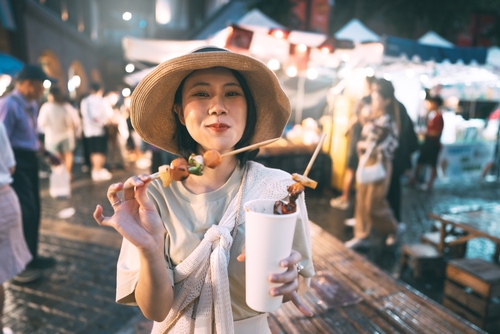Japan’s street food scene offers some of the world’s most delicious and unique culinary experiences. From bustling Tokyo markets to quiet Osaka alleyways, street vendors serve fresh, affordable meals that showcase authentic Japanese flavors. This guide helps you navigate Japan’s street food culture with confidence, covering what to try, where to find it, and how to order like a local.
Street food in Japan differs significantly from other countries. Most vendors maintain exceptional hygiene standards, and the quality rivals sit-down restaurants. You’ll find everything from savory pancakes to sweet pastries, all prepared fresh throughout the day. Understanding Japanese street food culture enhances your travel experience and connects you with local traditions.
Popular Japanese Street Food You Must Try
Takoyaki (Octopus Balls)
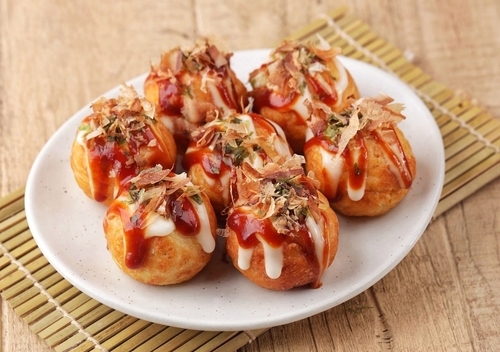
Takoyaki represents Osaka’s most famous street food contribution. These round dumplings contain diced octopus, green onions, and tempura scraps, cooked in special molded pans. Vendors top them with takoyaki sauce, mayonnaise, bonito flakes, and dried seaweed powder.
The best takoyaki has a crispy exterior and creamy interior. Look for vendors who cook orders fresh rather than keeping them warm under heat lamps. Prices typically range from 400-600 yen for six pieces.
Taiyaki (Fish-Shaped Pastries)
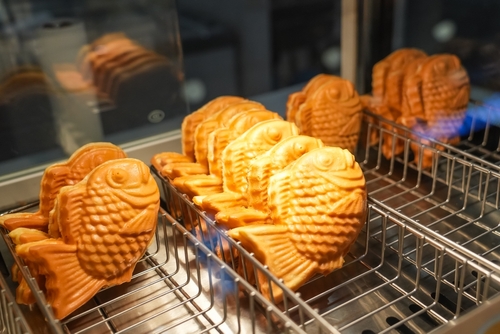
Taiyaki are fish-shaped pastries filled with sweet red bean paste, custard, or chocolate. The golden-brown exterior provides a satisfying crunch, while the filling stays warm and sweet. Some vendors offer seasonal flavors like matcha or sweet potato.
Traditional taiyaki uses a waffle-like batter cooked in fish-shaped molds. The tail section often contains the most filling, making it the prized final bite. Expect to pay 150-250 yen per piece.
Yakitori (Grilled Chicken Skewers)
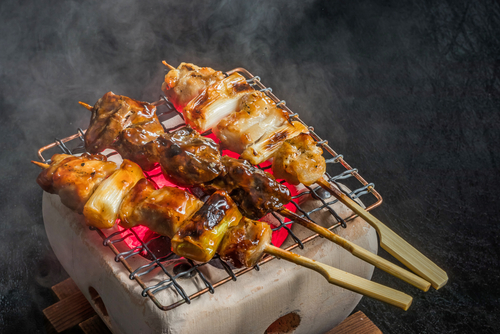
Yakitori stands appear throughout Japan, especially near train stations and entertainment districts. These grilled chicken skewers come in various cuts, from standard thigh meat to more adventurous options like chicken hearts or skin.
Vendors typically offer two sauce options: tare (sweet soy-based glaze) or shio (salt). Each skewer costs 100-200 yen, making yakitori an affordable and filling street food option.
Okonomiyaki (Savory Pancakes)
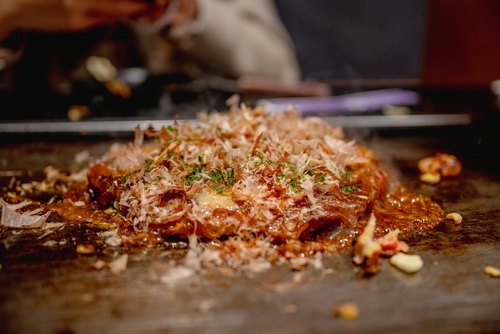
Often called “Japanese pizza,” okonomiyaki is a savory pancake containing cabbage, flour, eggs, and your choice of protein. Hiroshima and Osaka have distinct preparation styles, with Hiroshima layering ingredients and Osaka mixing everything together.
Street food versions cook on large flat grills visible to customers. The cooking process becomes part of the entertainment as skilled vendors flip and shape the pancakes. Prices range from 500-800 yen.
Where to Find the Best Street Food in Japan
Tokyo’s Street Food Districts
Shibuya and Harajuku offer diverse street food options, especially around Takeshita Street. You’ll find crepes, taiyaki, and innovative fusion foods targeting younger crowds.
Asakusa provides a more traditional experience. The area surrounding Senso-ji Temple features numerous street food stalls selling ningyo-yaki (doll-shaped pastries), melon bread, and traditional sweets.
Shibuya Sky and Tokyo Station underground areas contain extensive food courts with street food-style vendors offering quick, quality meals.
Osaka’s Food Culture
Osaka earned its nickname “Japan’s Kitchen” through its exceptional food culture. Dotonbori district concentrates numerous street food vendors along the canal. The area stays busy from afternoon until late evening.
Kuromon Ichiba Market operates as a covered market where vendors sell fresh sushi, wagyu beef skewers, and tropical fruits. This market caters to both locals and tourists, maintaining authentic flavors while providing English signage.
Regional Specialties
Hiroshima specializes in its unique okonomiyaki style and momiji manju (maple leaf-shaped pastries). Kyoto offers traditional sweets near temple areas, including matcha-flavored treats and traditional wagashi.
Hokkaido features seafood-focused street food, including fresh crab and sea urchin. Fukuoka is famous for its ramen yatai (food stalls) that operate at night along the river.
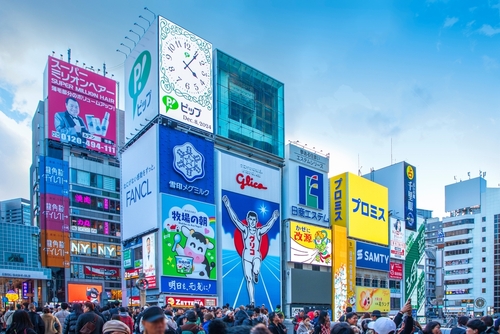
How to Order Street Food Like a Local
Payment Methods
Most street food vendors accept cash only. Have small bills and coins ready, as vendors appreciate exact change. Some modern stalls in tourist areas accept IC cards (Suica, Pasmo) or mobile payments, but cash remains the most reliable option.
Ordering Process
Street food ordering follows simple steps:
- Approach the vendor and look at the menu (often displayed with pictures)
- Point to your desired item or say the name
- Hold up fingers to indicate quantity
- Pay when the vendor requests payment (usually before preparation)
- Wait for your order and collect it when ready
Basic Japanese Phrases
Learning a few phrases enhances your street food experience:
- “Kore wo kudasai” (This one, please) while pointing
- “Ikutsu desu ka?” (How much is it?)
- “Arigato gozaimasu” (Thank you very much)
- Numbers 1-10 for quantities
Eating Etiquette
Japanese street food culture includes specific etiquette rules. Don’t walk while eating; find a designated eating area or stand near the vendor. Dispose of trash in provided bins or take it with you, as public trash cans are scarce.
Many vendors provide small plates or napkins. Use provided toothpicks for items like takoyaki, and be careful with hot foods that may burn your mouth.
Street Food Safety and Quality
Hygiene Standards
Japanese street food vendors maintain exceptional cleanliness standards. Look for vendors with steady customer turnover, ensuring food stays fresh. Popular stalls often indicate better quality and safety.
Most vendors wear gloves, use clean utensils, and maintain organized cooking areas. The risk of foodborne illness from reputable street food vendors remains extremely low.
Identifying Quality Vendors
Quality indicators include:
- Long lines of local customers
- Fresh ingredients visible during preparation
- Clean cooking equipment and serving areas
- Vendors who cook orders individually rather than pre-cooking large batches
- Clear pricing displays
Dietary Considerations
Vegetarian and vegan options exist but require careful selection. Many seemingly vegetarian items contain dashi (fish stock) or other animal products. Sweet items like taiyaki with red bean filling typically suit vegetarians.
For those with allergies, communication can be challenging due to language barriers. Consider carrying allergy cards in Japanese or using translation apps.
Frequently Asked Questions
What time do street food vendors typically operate?
Most street food vendors operate from late morning through evening. Popular tourist areas may have vendors starting around 10 AM and continuing until 9 PM. Night markets and yatai stalls often operate later, from evening until midnight or beyond.
How much should I budget for street food in Japan?
Budget 1,000-2,000 yen per person for a satisfying street food meal. Individual items range from 100-800 yen. This budget allows you to try several different foods and experience variety without overspending.
Can I find halal street food options in Japan?
Halal street food options are limited but growing, especially in Tokyo’s tourist areas. Look for vendors displaying halal certification or stick to vegetarian options. Some vendors in areas with large Muslim populations offer halal-certified meats.
Is it safe to drink tap water from street vendors?
Yes, Japan’s tap water meets high safety standards. Street vendors serving drinks or using tap water maintain safe practices. Bottled water is also widely available if you prefer.
What’s the best time to experience street food markets?
Early evening (5-7 PM) offers the best street food experience. Vendors are actively cooking fresh items, crowds are manageable, and you can enjoy food while exploring before dinner time.
Planning Your Japanese Street Food Adventure
Street food exploration requires some preparation but rewards you with authentic cultural experiences. Start with familiar flavors and gradually try more adventurous options. Don’t hesitate to revisit vendors you enjoy, as many offer seasonal variations or daily specials.
Consider organizing your street food exploration around specific neighborhoods or markets. This approach allows you to compare similar items from different vendors and discover your personal preferences.
Most importantly, approach Japanese street food with curiosity and respect for local customs. Vendors take pride in their specialties and appreciate customers who show genuine interest in their craft. Your willingness to try new foods and engage respectfully with local culture creates memorable experiences that extend far beyond the meal itself.
